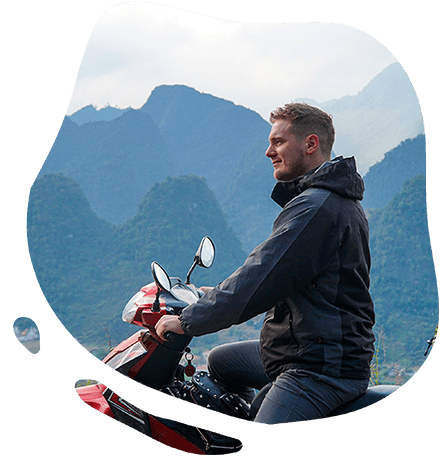Best time to do trekking in Ha Giang
Trekking in Ha Giang is a year-round activity, but each season offers a unique and captivating experience. Here’s a breakdown of what you can expect in each season:
Trekking in Spring (March, April, May)
- Enjoy clear skies and pleasant temperatures, making it one of the best times for trekking in Ha Giang.
- The weather is neither too hot nor too cold, providing comfortable hiking conditions.
- Witness the region coming to life with vibrant blooms and fresh greenery.
Trekking in Summer (June, July, August)
- Expect hot and humid weather, with occasional rainfall during this season.
- The terraced rice fields in Hoang Su Phi display a lush green carpet, offering picturesque vistas.
Trekking in Autumn (September to November)
- September is the harvest season in Hoang Su Phi, providing a breathtaking spectacle of golden rice terraces.
- October and November are ideal for trekking around Dong Van, with pleasant weather, blue skies, and limited rainfall.
Trekking in Winter (December to February)
- Experience cold weather with the possibility of fog, but little rain during this season.
- For those unfazed by the cold, winter offers a great opportunity for trekking, as the activity will keep you warm and invigorated.
Tips for trekking in Ha Giang
- Choose the right season and location: As mentioned above, trekking can vary per season.
- From June to September: Opt for trekking in the Hoang Su Phi terraced rice fields.
- For all other months: Consider trekking in destinations around the Ha Giang Loop, such as Dong Van.
- Consider Multi-day Trekking with Homestay: Opt for multi-day treks to explore more remote and off-the-beaten-path areas. Staying overnight in an ethnic minority homestay offers a unique cultural experience.
- Trek with a Local Guide: Always go trekking with a knowledgeable local guide who knows the routes and can arrange meals and accommodations in local homestays.
- Bring Proper Hiking Gear: Essential items include sturdy hiking shoes suitable for muddy and steep terrain.
- Carry Sufficient Water: Hiking can be tiring, and it’s essential to carry enough water, as you might not find shops along the way.
- Prepare for Weather Changes: Wear layered clothing to easily adapt to unpredictable weather, including rain, cold, and hot conditions.
- Respect Local Culture: Be mindful of local customs and avoid walking through rice fields, as they are vital to the livelihood of the locals. Always ask for permission before taking photos of ethnic minorities.
Best hiking & trekking destinations in Ha Giang
1. Hoang Su Phi
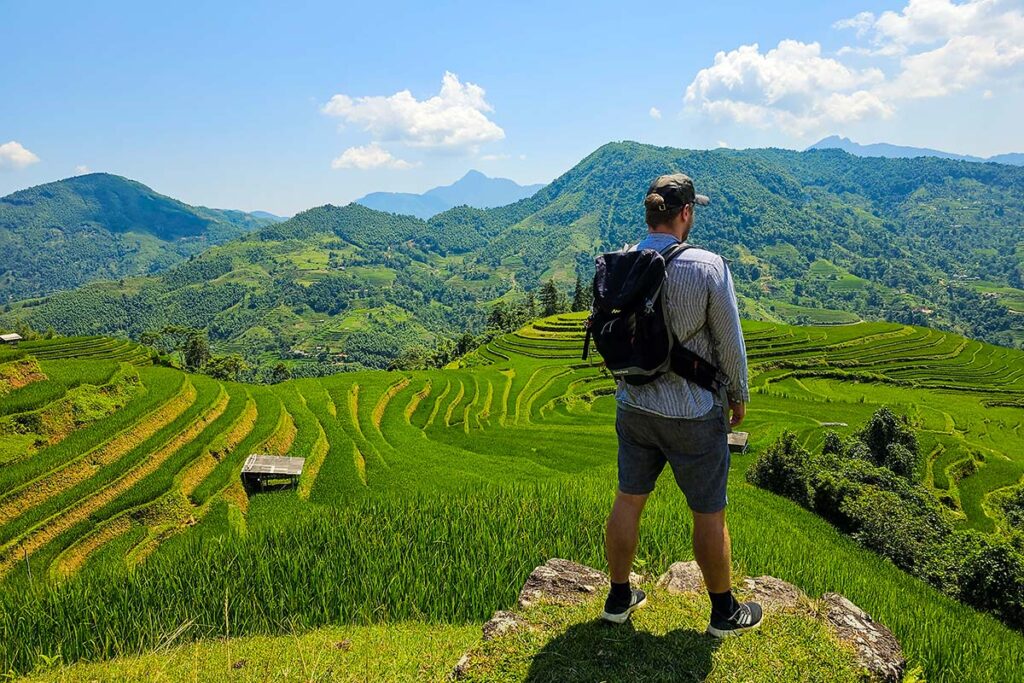
Hoang Su Phi is undoubtedly the best destination for trekking in Ha Giang, especially during the period between July to September when the rice terraces are at their most stunning.
Renowned for having the most breathtaking terraced rice fields in Vietnam, Hoang Su Phi offers a trekking experience like no other. Trek from one picturesque village to another, navigating local paths that lead you through the magnificent rice fields while providing an opportunity to immerse yourself in the vibrant ethnic culture of the local minorities.
2. Dong Van Disitrct
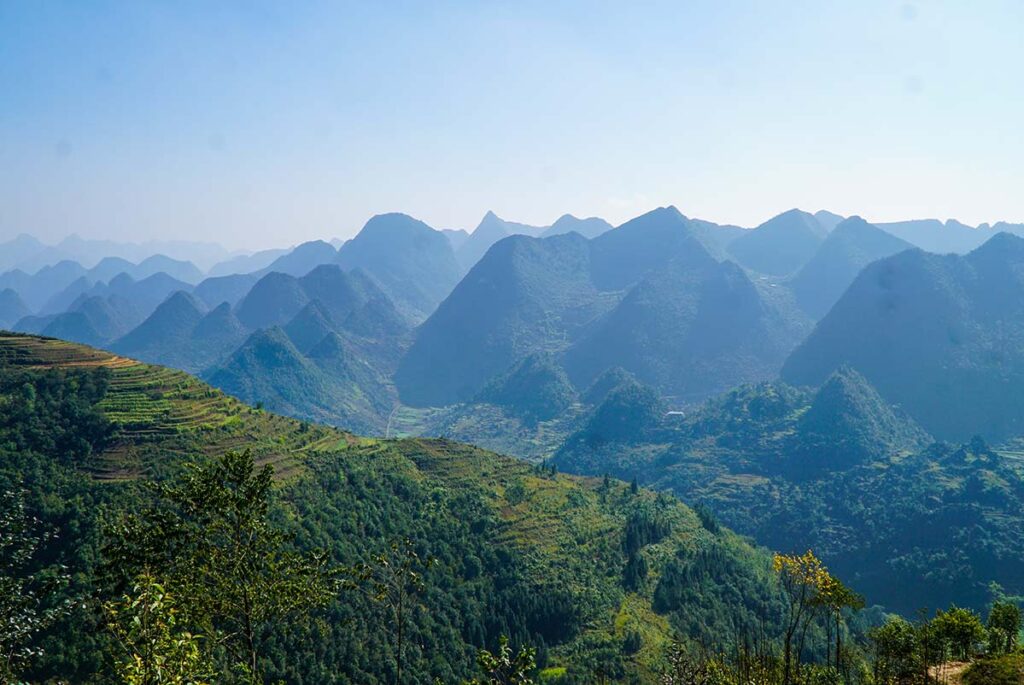
Dong Van boasts some of the epic mountain landscapes in Vietnam and holds the prestigious title of being a UNESCO Geopark. This region is a melting pot of diverse cultures, housing over 17 different ethnic groups.
One of the major advantages of trekking in this area is its convenient location along the Ha Giang Loop, making it easily accessible for most travelers. With the option to add an extra day or even embark on a multi-day trek, exploring Dong Van is an excellent choice for an enriching trekking experience.
3. Mau Due

For travelers seeking the beauty of terraced rice fields without venturing too far off the Ha Giang Loop route, Mau Due is the ideal destination. This picturesque location boasts stunning terraced rice fields that are sure to leave you mesmerized.
While trekking here can be a bit challenging due to the limited roads in the area, the effort is well worth it. To fully explore Mau Due, it’s recommended to enlist the expertise of a local guide who can navigate the terrain and provide valuable insights about this captivating region.
4. Tay Con Linh mountain

For avid mountain climbers and adventure seekers, Tay Con Linh Mountain presents an enticing challenge. As the highest peak in Ha Giang, towering at 2,419 meters, ascending to the summit requires considerable expertise in mountain hiking.
To ensure a safe and successful journey, it is highly recommended to enlist the guidance of a local expert and prepare adequately with suitable gear, provisions, and accommodations nearby. The trek to the top will lead you through terraced rice fields, dense forests, and steep terrains, rewarding you with breathtaking views and an unforgettable experience.
5. Thon Tha Village
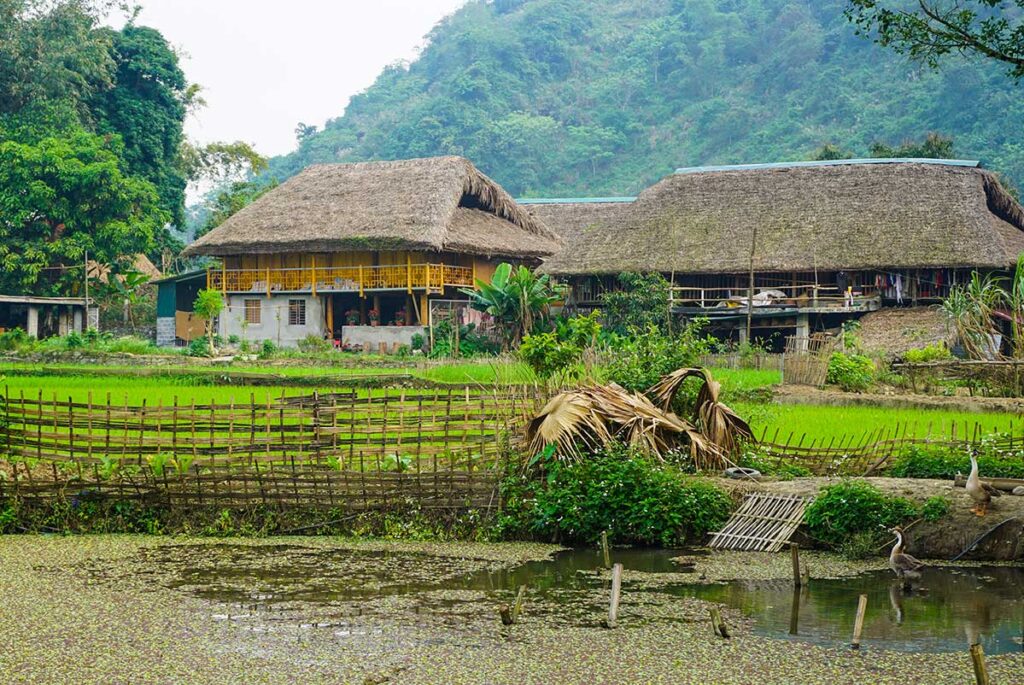
One of the appealing aspects of trekking around Thon Tha Village is the option to explore without a guide. This charming Tay ethnic minority village boasts an array of stilt houses and offers delightful homestays for an authentic overnight experience.
Situated in proximity to Ha Giang City, Thon Tha Village serves as a captivating alternative, providing a more immersive encounter with local culture. Stroll through the lush rice fields enveloping the village, delve into the vibrant life of the ethnic community, and venture to a nearby waterfall for an invigorating hike, making this destination an idyllic choice for independent explorations.
6. Du Gia
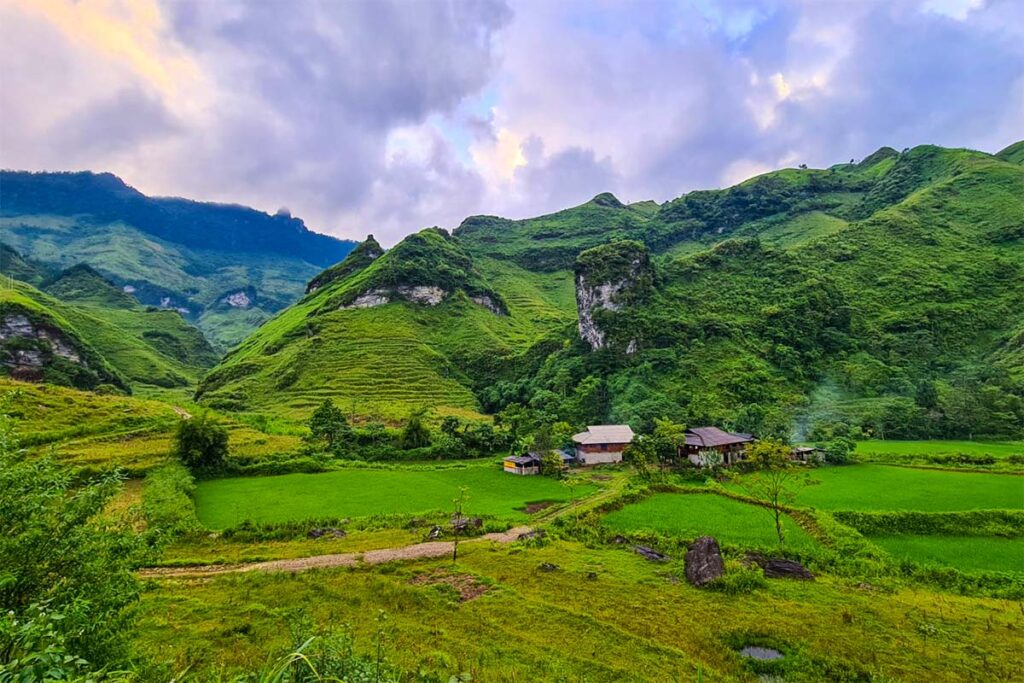
Nestled within the tranquil embrace of a Tay minority village, Du Gia exudes serenity and boasts breathtaking rice fields. A hike through this picturesque valley offers a delightful experience, as the terrain remains relatively flat, making it easily navigable.
It’s worth noting that some pathways are shared with local motorbike riders traveling to neighboring villages or rice fields where they work. After a rewarding trek, you can take a refreshing dip in the Du Gia Waterfall, providing the perfect finale to a day of exploration.
Booking a trekking tour in Ha Giang
If you’re planning to embark on a trekking adventure in Ha Giang, it’s advisable to arrange your tour in advance. Unlike Sapa, trekking options in Ha Giang are less developed, and guides may not be readily available at every accommodation.
At Local Ha Giang, we offer tailor-made trekking tours designed to suit your preferences, encompassing the landscapes you wish to explore, your physical stamina, and the cultural experiences you seek. Whether you desire a half-day, full-day, or multi-day trek along the Ha Giang Loop, we’ve got you covered. Additionally, we can organize captivating trekking tours through the mesmerizing terraced rice fields of Hoang Su Phi. Contact us to craft the perfect trekking journey that leaves you with cherished memories of Ha Giang.
FAQ trekking in Ha Giang
Is trekking in Ha Giang better than Sapa?
It depends on what you’re looking for. Ha Giang offers more remote and less touristy trekking experiences compared to Sapa, which tends to be more crowded. Both regions have stunning landscapes, but Ha Giang provides a more authentic experience with its diverse ethnic minority communities.
Can I do trekking in Ha Giang?
Yes, Ha Giang offers various trekking options ranging from easy trails to more challenging routes. The area is becoming increasingly popular for its trekking opportunities, thanks to its rugged terrains and beautiful landscapes.
How difficult is hiking in Ha Giang?
The difficulty level varies depending on the trail you choose. Some routes are relatively easy and suitable for beginners, while others may require more advanced hiking skills and physical fitness. Always do your research or consult local guides to find a trail that suits your level.
Can I do trekking without a guide?
While it’s possible to trek without a guide, it’s highly recommended to have one, especially if you’re not familiar with the region. A guide can not only ensure your safety but also offer valuable insights into the local culture and environment.
What is the best time to go trekking in Ha Giang?
The best time for trekking in Ha Giang is during the dry season, which is from October to April. The weather is more stable, and the trails are less slippery compared to the rainy season.
Is it safe to go hiking in Ha Giang?
Generally, Ha Giang is considered safe for trekking, but like any outdoor activity, there are risks involved. It’s crucial to be well-prepared, stay hydrated, and preferably trek with a guide for safety reasons.
Can I combine trekking with a motorbike tour in Ha Giang?
Absolutely, many travelers opt to combine motorbike tours with trekking excursions to experience the best of what Ha Giang has to offer. You can ride to a specific location, park your motorbike, and then go on a day trek to explore the region’s natural beauty.

